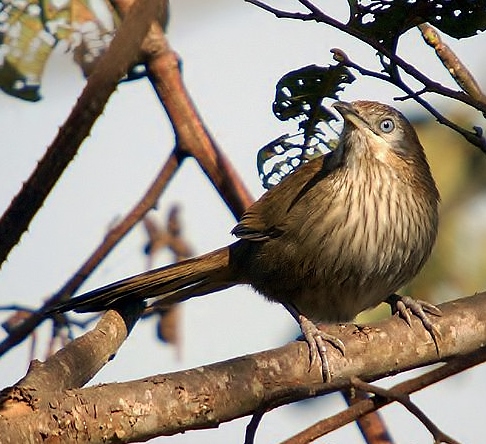 |
| Photo by Jyotendra Thakuri (Oriental Bird Images) |
Common name:
spiny babbler (en); zaragateiro-do-Nepal (pt); cratérope du Népal (fr); turdoide nepalés (es); igeldrossling (de)
Taxonomy:
Order Passeriformes
Family Timaliidae
Range:
This species is endemic to Nepal.
Size:
These birds are 28 cm long and weigh 65-90 g.
Habitat:
The spiny babbler is mostly found in moist tropical and sub-tropical scrublands, and also in areas a few scattered trees, at altitudes of 900-2.100 m.
Diet:
They feed on the ground or among low scrubs, mainly eating insects, such as beetles, butterflies and caterpillars, grasshoppers, dragonflies, bugs, wasps and other insects. Earthworms are also common in their diet. They also eat some fruits, berries, seeds and nectar.
Breeding:
Spiny babblers breed in April-June. The nest is a deep cup made of grasses, placed in a low scrub, attached to a sturdy clump of grasses, or sometimes in a fork in a small tree. The female lays 3-4 pale blue eggs, which are incubated by both parents for 19-20 days. The chicks are fed by both parents and fledge 22-24 days after hatching, but only become fully independent 4-6 weeks later.
Conservation:
IUCN status – LC (Least Concern)
This species has a relatively large breeding range and is reported to be frequent and fairly widespread. The population is suspected to be stable in the absence of evidence for any current declines or substantial threats.







